Understanding the Basics: Pickleball and Tennis
Both pickleball and tennis are engaging racquet sports, but they differ significantly in gameplay, court structure, and community involvement. While pickleball often finds its players enjoying relaxed, social matches, tennis has evolved into a competitive arena for skilled athletes. Gaining insight into these sports' historical and contextual backgrounds allows players and enthusiasts to better understand their applications and appeal, paving the way for a more informed decision in choosing between them.
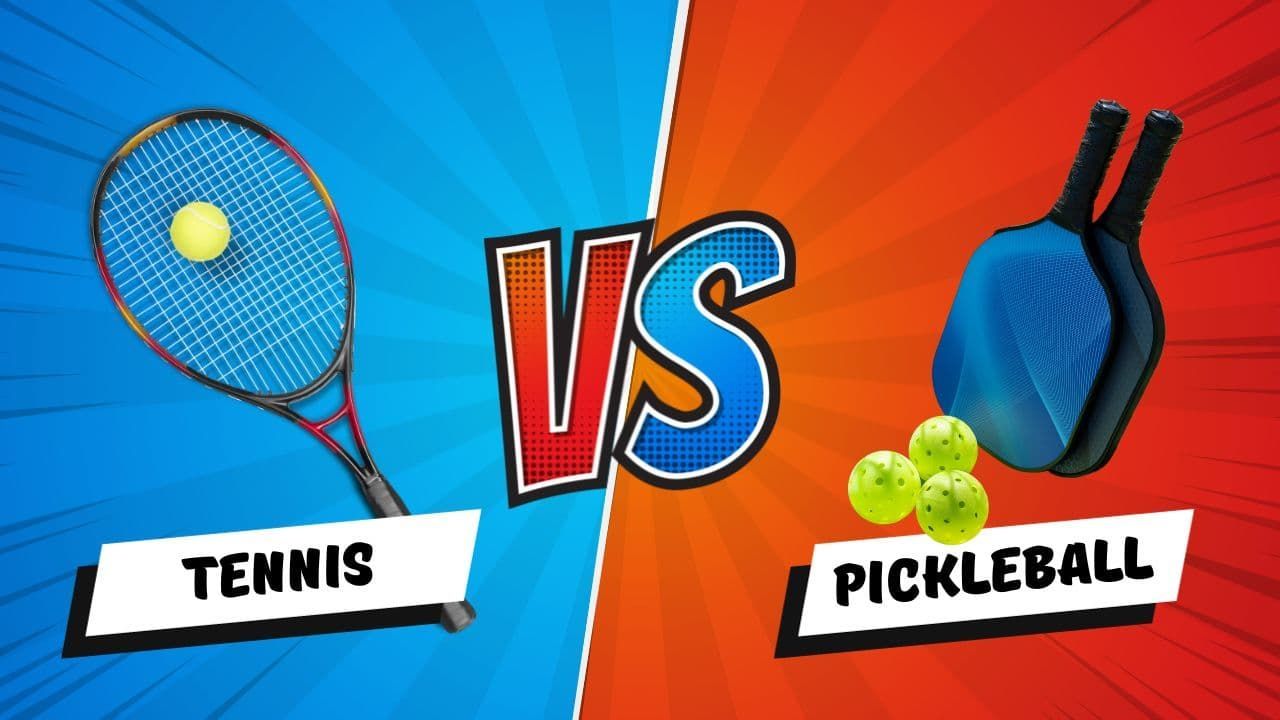
What is Pickleball?
Pickleball is a relatively recent addition to the world of racquet sports, pioneered in the mid-1960s by Joel Pritchard, Bill Bell, and Barney McCallum. Its unique blend of elements from tennis, badminton, and table tennis has garnered a growing fan base across age groups. This sport is especially popular among adults seeking an accessible yet engaging game that promotes physical activity and social interaction.
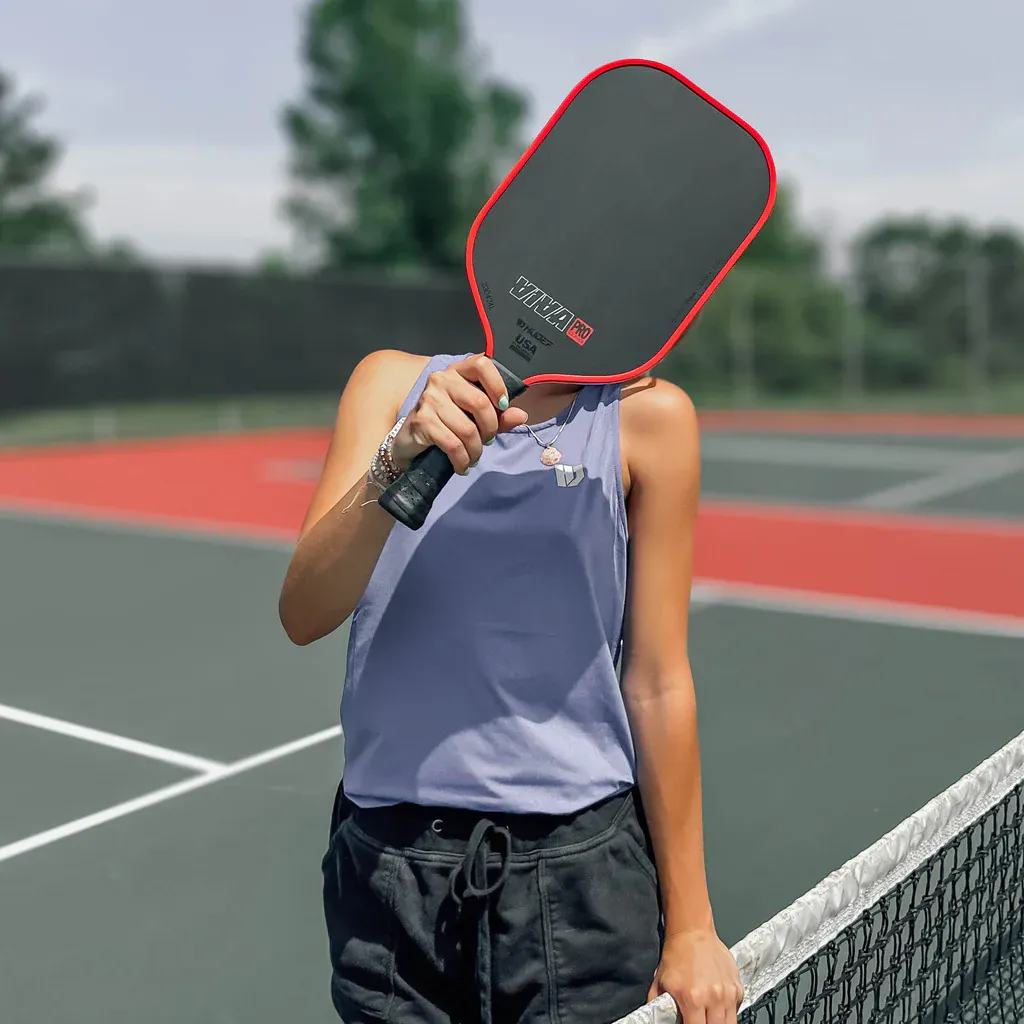
- Playing Conditions: Pickleball can be played both indoors and outdoors, typically utilizing smaller courts.
- Game Equipment: Players use solid paddles made from wood or composite materials, combined with perforated plastic balls.
- Gameplay Style: The game is characterized by its strategic placements and quick reactions rather than reliance on brute strength.
One of the appeals of pickleball is its low barrier to entry, enabling players of various skill levels to quickly learn the game and participate. The rules are straightforward, thus encouraging social play and competition in a community-oriented atmosphere. This grassroots engagement has been instrumental in the sport's accelerating growth over recent years, evident with the increasing number of courts and organized leagues across the United States and beyond.
What is Tennis?
Tennis, on the other hand, boasts a longer and more established history, recognized as a professional sport dating back to the late 19th century. The game is played in both singles and doubles formats, with players using stringed racquets to hit a felt-covered rubber ball over a net into the opponent's court.

- Equipment: Tennis racquets are typically heavier and designed to facilitate powerful strokes, where players aim to land shots with precise placements, utilizing spins to outmaneuver opponents.
- Court Size: Tennis courts are larger, measuring 78 feet long and 36 feet wide for doubles matches. This expansive dimension allows for extensive rally encounters and more athletic plays.
- Game Strategy: Tennis encourages longer rallies while focusing on consistent server return tactics and the use of various strokes.
Tennis has cultivated a competitive atmosphere with structured tournaments, intricate regulations, and professional play. The social aspects of tennis can be highly organized, with clubs and leagues fostering a community of players who network, compete, and improve together. While both sports are enjoyable, their respective gameplay styles, physical demands, and social atmospheres appeal to different demographics in the sports community.
Pickleball Court vs Tennis Court Dimensions and Layout
The world of pickleball and tennis speaks to unique dimensions that heavily influence their gameplay styles. Understanding the differences in court sizes, layout, and design is crucial for players in comprehending what to expect when either playing or watching each sport.

Pickleball Court Dimensions
A standard pickleball court measures precisely 20 feet wide by 44 feet long, facilitating both singles and doubles matches with equal dimensions. This smaller court size promotes a more intimate playing field, allowing quicker reactions and strategic maneuvers. Key features include:
- Dimensions: 20 feet wide and 44 feet long, accommodating both singles and doubles games.
- Non-Volley Zone: Extending 7 feet from the net on both sides, often referred to as "the kitchen," where players cannot volley shots.
- Net Height: The net is set at a height of 34 inches in the center and 36 inches at the side posts, making it more manageable for new players.

This compactness promotes rapid exchanges and a dynamic approach, ensuring that games are engaging and rapid-paced, inviting players of all skill levels to participate effortlessly.
Tennis Court Dimensions
Tennis courts represent a more expansive landscape, offering a significantly larger play area. The standard dimensions include:
- Size: 27 feet wide for singles matches and 36 feet wide for doubles. The length remains consistent at 78 feet.
- Doubles Alleys: An added feature of the doubles court that extends width by 4.5 feet on each side, allowing for more room during doubles play.
- Net Height: The net height is generally higher than pickleball at 36 inches in the center and 42 inches at the posts, emphasizing powerful strokes and serving techniques.
The spaciousness enables long rallies, compelling serves, and strategic adaptations, particularly for competitive players who thrive on the physical demands presented by tennis.
Visual Comparison: Fitting Pickleball Courts on a Tennis Court
One of the advantages of growing pickleball's popularity is its compatibility with existing tennis courts. A single tennis court can be converted into multiple pickleball courts, with layouts allowing for the following configurations:
- One Court: One pickleball court can be set up in the center, utilizing the existing tennis net adjusted to the proper height.
- Two Courts: The court can be split in half horizontally to accommodate two pickleball courts, sharing the net easily with some adjustments.
- Four Courts: With proper modifications to lines and spacing, it’s possible to fit four pickleball courts within a standard tennis court.
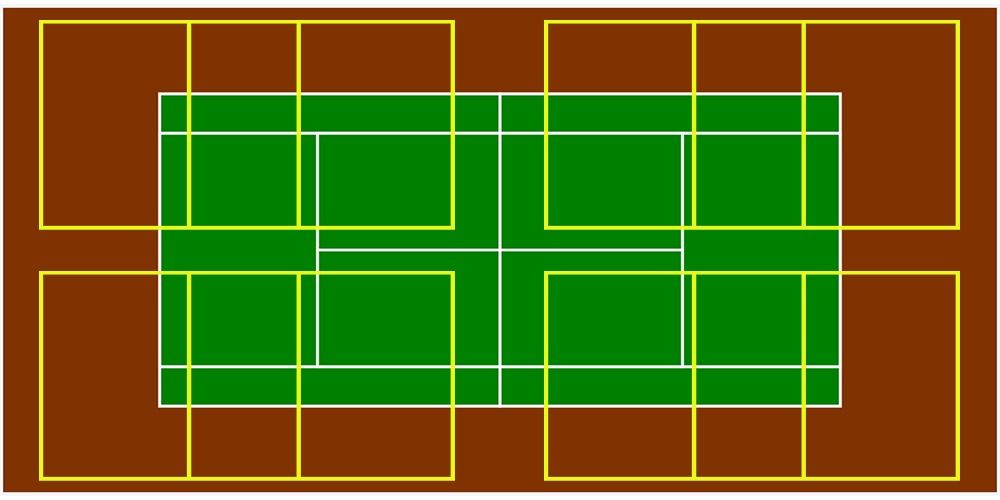
This adaptability allows communities to maximize their facilities and embrace the growing demand for options in racquet sports, creating more accessible playing environments for all.
Net Height and Placement: Key Differences
When it comes to net height and placement, pickleball and tennis diverge significantly, affecting the gameplay experience for players.
Pickleball Net Height
In pickleball, the net height is moderately lower compared to tennis, which plays a crucial role in determining the nature of gameplay:
- Height Specifications: The net is set at 34 inches at the center and 36 inches at the sidelines.
- Impact on Play: This allows players, especially beginners, to easily return shots without having to execute complex strokes, making the game more approachable and enjoyable.
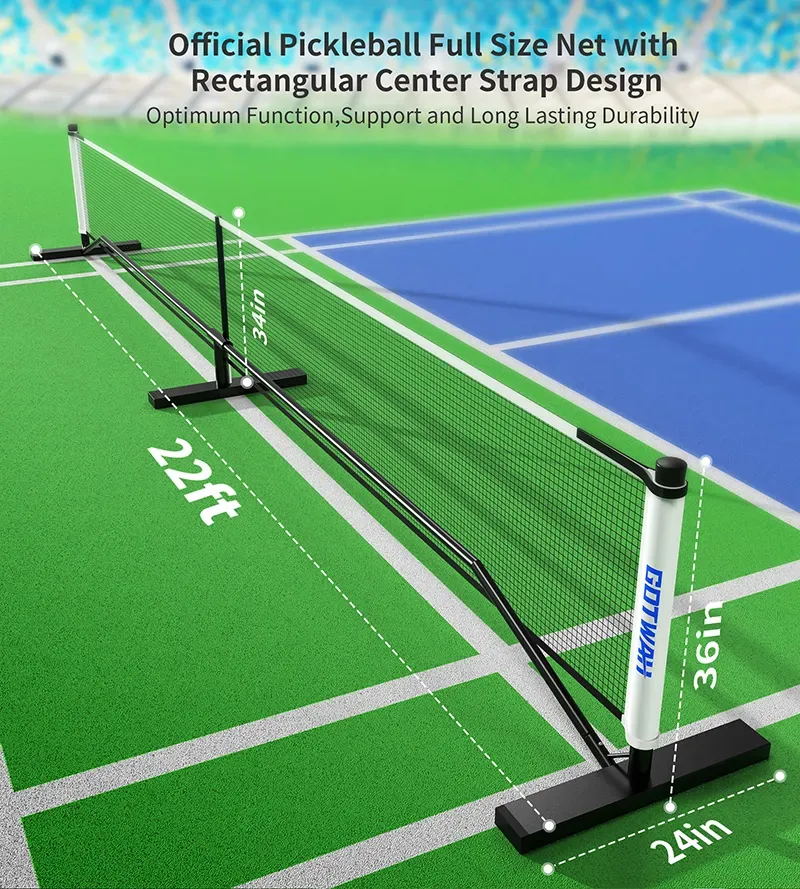
The lower height encourages a range of strokes and emphasizes strategic shooting over raw power, enhancing the game's overall finesse.
Tennis Net Height
Tennis nets are designed higher to challenge players more significantly, adding an element of complexity to the game's strategy:
- Height Specifications: The net measures 36 inches in the center and rises to 42 inches at the posts.
- Gameplay Implications: This height encourages powerful serves and precise returns, as players must master their swings and positioning to navigate around the net effectively.
The increased height requires more strategic thinking regarding shots, especially when approaching the net and engaging in volley exchanges.
The Non-Volley Zone: Pickleball's Unique Feature
An essential characteristic that differentiates pickleball from tennis is its unique non-volley zone, often referred to as "the kitchen." Understanding this feature can enhance gameplay strategy and player decision-making.
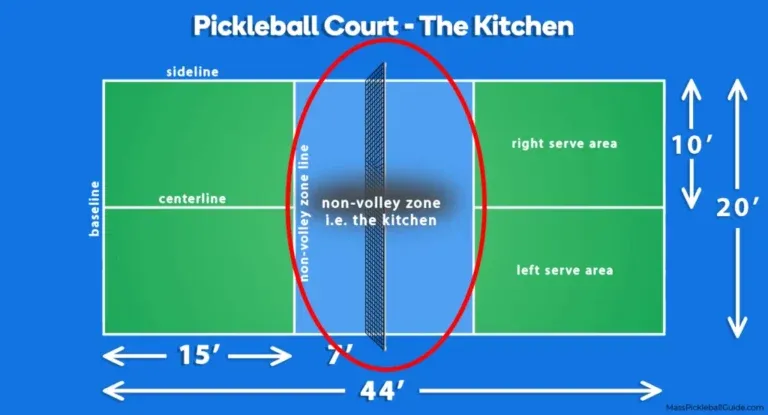
How the Non-Volley Zone Affects Gameplay
The non-volley zone's presence significantly influences how players approach the game:
- Zone Specifications: Extending 7 feet from the net on both sides, players are prohibited from hitting volleys while standing inside this zone unless the ball has bounced beforehand.
- Strategic Placement: This encourages players to utilize soft shots or "dinks" that land within the kitchen, fostering a more strategic gameplay style focused on precision and shot placement rather than power.
- Court Positioning: Players are compelled to engage in thoughtful court positioning, as they have to avoid the non-volley zone while still making effective shot decisions.
This aspect leads to more sustained rallies and strategic engagements, highlighting the sport's social appeal and tactical depth, contrasting sharply with the more aggressive and straightforward volleying encounters characteristic of tennis.
Court Surface Materials: Impact on Play
Different surface materials used for pickleball and tennis courts have implications for gameplay, player comfort, and overall experience.
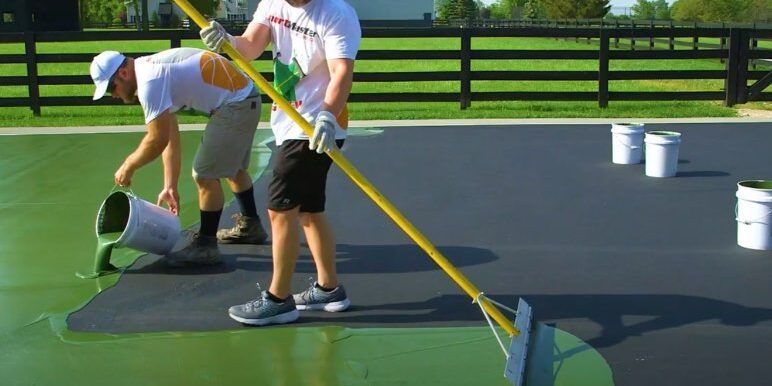
Pickleball Court Surfaces
Common court surfaces for pickleball are designed for player safety and performance:
- Asphalt: A popular, cost-effective option that offers durability, but may lead to joint strain.
- Concrete: Known for its longevity and less maintenance; it provides a smooth playing experience but also impacts joint health similarly.
- Plastic Modular Tiles: These are easier on the joints, offering shock absorption while providing quick installation, although the ball bounce may vary.
- Rubber and Synthetic Turf: These materials provide a softer landing, promoting comfort during play, albeit with potential long-term maintenance challenges.
The selection of a suitable surface can impact ball speed and player stamina, emphasizing the importance of institutional choices in fostering enjoyable playing experiences.
Tennis Court Surfaces
Tennis courts feature a variety of surfaces, each with unique characteristics and implications:
- Hard Courts: Commonly asphalt or concrete, they offer consistent ball bounce and provide a fast-paced game.
- Clay Courts: Typically made of crushed brick or shale, these surfaces lead to higher bounces and slower play, favoring longer rallies.
- Grass Courts: Offering the fastest gameplay, they require specific maintenance but provide a unique playing experience that emphasizes serve-and-volley techniques.
These variances in surface construction significantly influence style and pace of play, adding to the competitive nature enjoyed by tennis players.
Equipment Comparison: Paddles, Racquets, and Balls
The equipment utilized in each sport also plays a critical role in defining gameplay and altering player experiences.

Pickleball Paddles and Balls
Pickleball equipment consists of solid paddles and lightweight balls that enhance player engagement:
- Paddle Specifications: Typically, paddles are made from wood or composite materials, featuring varied weights ranging from 7 to 8 ounces. The shortened paddle design allows for more control and precision.
- Ball Characteristics: The plastic wiffle ball, with several perforations, is lightweight, resulting in a lower bounce than traditional racquets, requiring different game dynamics.
These design choices are intentional, ensuring that gameplay focuses on strategy, precision, and social enjoyment rather than raw power.
Tennis Racquets and Balls
In contrast, tennis utilizes more traditional racquet designs that accentuate play style:
- Racquet Specifications: Tennis racquets often range from 9 to 12 ounces in weight and come equipped with stringed surfaces, allowing for powerful strokes and extensive spin.
- Ball Characteristics: Tennis balls are heavier and feature a felt covering, designed to elevate the sport's performance in terms of speed and bounce.
The complexity of these racquets and balls necessitates higher skill levels and greater physical demands from players, reinforcing the competitive nature of the sport.
Rules and Gameplay: Serving, Scoring, and More
Understanding the rules surrounding serving and scoring enables players to navigate each game's unique structure effectively.

Serving and Scoring in Pickleball
The serving methodology in pickleball delineates it sharply from tennis:
- Underhand Serve: Players must serve the ball underhand from behind the baseline, aiming diagonally across the net into the opponent's service area.
- Scoring System: Points can only be scored by the serving team, reaching a typical game limit of 11 points with a minimum of a two-point margin required for victory.
- Two-Bounce Rule: After each serve, the ball must bounce once on each side before players can begin volleying.
These simplified rules enhance accessibility, making it easier for beginners to engage with the sport while maintaining depth in strategy.
Serving and Scoring in Tennis
Tennis employs a more robust system surrounding serving and scoring:
- Overhand Serve: Serves must be executed overhand, giving both players two chances to successfully land the ball in the designated service box.
- Scoring Structure: A player must win four points to win a game, with scores referred to as “love,” “15,” “30,” “40,” and the “deuce” condition for equal points.
- Match Format: Matches may consist of best-of-three or five sets, with opera and intricate scoring potentially leading to lengthy matches.
This complexity in rules reflects a higher level of strategy and engagement in matches, reinforcing tennis as a competitive endeavor.
Physical Demands and Player Experience: Who Can Play?
The level of physical commitment required in each sport can attract or deter potential players, making it salient for future participants.
Physical Requirements of Pickleball
Pickleball represents a less physically demanding option, particularly appealing for players of varied ages:
- Lower Intensity: The smaller court size of 20 feet by 44 feet requires less running, encouraging greater participation among individuals, particularly older adults.
- Focus on Precision: Players are incentivized to develop reflexes and indexed shot placement rather than sheer power, making it ideal for beginners.
- Social Play: The approachable nature of the game often leads to community-oriented play and opportunities for social engagement.
These attributes foster an environment that suits diverse players seeking fun and fitness in a more relaxed setting.
Physical Requirements of Tennis
Conversely, tennis demands a far more rigorous physical engagement:
- Higher Intensity: Players must navigate a larger court measuring 78 feet by 36 feet for doubles, necessitating significant endurance and agility.
- Skill Diversity: The game demands mastery of various strokes and movement techniques, making it physically intensive and sometimes daunting for beginners.
- Competitive Atmosphere: Tennis matches often require sustained concentration and physical prowess, appealing to competitive spirits and those seeking rigorous athletic challenges.
These competitive demands can foster an intense environment that can be rewarding for dedicated players who thrive through physical exertion and skill development.
Social Aspects and Community: More Than Just a Game
Both sports embody social elements that enrich the experience, creating a sense of community and interaction among participants.
The Social Environment of Pickleball
Pickleball thrives on its engaging social environment, promoting opportunities for players to collaborate and connect:
- Community-Focused: Game settings are often built around social engagement, allowing for friendly matches characterized by conversation and camaraderie.
- Inclusive Atmosphere: Facilities often cater to multiple skill levels and ages, encouraging a welcoming environment that embraces all players.
- Organized Events: Popularity has led to organized tournaments and community gatherings, allowing for further collaboration among players.
This focus on social interaction helps cultivate lasting friendships and networks while encouraging healthy physical activity.
The Social Environment of Tennis
Tennis clubs foster a strong sense of community, built around competition and shared interests:
- Structured Networking: Clubs often organize events, mixers, and tournaments that create spaces for camaraderie among players.
- Skill Exchange: Players within tennis communities engage in ongoing development through lesson sharing, drills, and friendly competition, enabling friendships through shared goals.
- Tradition and Legacy: Established teams and clubs often carry longstanding traditions that encourage loyalty while building intergenerational connections among players.
These social dynamics contribute to the sports community while engaging players on both competitive and personal levels.
Converting Tennis Courts to Pickleball Courts: A Practical Guide
Embracing the popularity of pickleball, many communities look to convert or repurpose existing tennis courts to support the sport, enhancing access for players.
Layout Options: One, Two, or Four Pickleball Courts?
When converting tennis courts to pickleball courts, various layout options are available to maximize space:
- One Court: Set a single pickleball court in the center of the tennis court using the existing net after adjusting the height.
- Two Courts: Construct two courts parallel in the center section, effectively dividing the tennis court territory while still maintaining appropriate dimensions.
- Four Courts: Utilizing the full space, four pickleball courts can fit within a single tennis court area's configuration with precise markings and proper net height adjustments.
Creating multiple courts within one facility not only increases accessibility but also promotes community bonding, allowing larger gatherings and matches.
Steps for Outlining a Pickleball Court
When marking a pickleball court on a tennis surface, the following steps should be observed:
- Use Tape or Chalk: Begin by marking a rectangle with dimensions of 44 feet by 20 feet.
- Define the Non-Volley Zone: Draw lines 7 feet from the net, creating the kitchen boundaries.
- Service Areas: Properly outline service areas, ensuring clear dimensions and markings to promote successful play.
- Adjust the Net: Place the net centrally at the correct height to facilitate gameplay.
Following these procedures guarantees that players can enjoy an authentic playing experience with minimized confusion.
Skill Level and Accessibility: Which Sport is Right for You?
Determining which sport to pursue can depend largely on an individual’s accessibility and skill level, impacting personal enjoyment and commitment for both sports.
Pickleball: Easy to Learn, Challenging to Master
Pickleball’s engaging gameplay lends itself to newcomers due to its approachable learning curve yet remains challenging for seasoned players looking to refine their skills:
- Immediate Participation: Players can quickly engage with the sport, allowing friends and family to enjoy the experience together.
- Strategic Elements: While easy to learn, players face strategies centered on tactical placements and shot variations, creating an engaging dynamic.
- Camaraderie and Fun: Pickleball cultivates a sense of community through social play and inclusive practices highly valued among players.
This accessibility enables diverse participation while promoting healthy physical activity.
Tennis: A Steeper Learning Curve
Tennis players encounter a more challenging journey, demanding dedication and effort to develop a comprehensive skill set:
- Technical Complexity: The learning path involves grasping various strokes, serves, and movements, making it less accessible for beginners.
- Physical Requirements: The higher demand for endurance and agility may dissuade some players from participating fully.
- Skill Development: Tennis rewards dedication through mastery, emphasizing athleticism and competitive play that can take longer to achieve.
However, these challenges can yield great rewards and personal achievement when committed to improvement and success.
The Future of Racket Sports: Coexistence or Domination?
As racquet sports evolve, the cohabitation of tennis and pickleball amid players' diverse interests presents a promising future for the sports community.
Evolving Trends in Multi-Sport Facilities
The integration of various sports within multi-sport facilities is a growing trend, accommodating players with different preferences:
- Adaptable Court Design: Facilities are increasingly adopting modular designs that allow for simultaneous usage of multiple sports while accommodating community needs.
- Technology Utilization: Innovative measures, such as enhanced court markings and surface materials, are being designed to enhance player performance and satisfaction.
- Youth Engagement: As more youth players embrace pickleball, multi-sport facilities can capitalize on the sport's popularity, further diversifying player demographics.
This shift towards a comprehensive approach creates vibrant environments that promote diverse interactions and increased participation across age groups.
Conclusion: Choosing the Right Court for Your Game
Ultimately, selecting between a pickleball court vs tennis court requires consideration of individual preferences, skill levels, and social inclinations. Pickleball's accessibility and community-oriented atmosphere provide a unique appeal to a broad range of players, fostering quick participation and social engagement. In contrast, tennis's complexities and physical demands cater to those seeking competition, challenge, and a deeper skill focus. These differences encapsulate the richness of both sports, contributing to their continued growth and popularity. Embracing both options may allow you not only to foster physical fitness but also to develop community connections that thrive beyond the court.
FAQ: Common Questions About Pickleball and Tennis Courts
How big is a pickleball court compared to a tennis court?
A pickleball court measures 20 feet wide by 44 feet long, while a tennis court measures 36 feet wide for doubles and 78 feet long. This size difference allows for multiple pickleball courts to fit within a tennis court's area.
What are the net height differences?
The net in pickleball is 34 inches in the center and 36 inches at the ends. In tennis, the net is 36 inches at the center and 42 inches at the posts, influencing gameplay strategy.
Can pickleball be played on a tennis court?
Yes, pickleball can be played on a tennis court with proper markings and adjustments to the net height, maximizing space for both sports.
What types of surfaces do the courts use?
Both pickleball and tennis courts can be made from similar materials, such as asphalt and concrete. However, the specific surface texture significantly impacts ball behavior and player comfort.
What are the unique features of each court?
Pickleball courts feature a non-volley zone known as "the kitchen," restricting volleys from that area. Tennis courts do not have a similar restriction and require specific service boxes.










